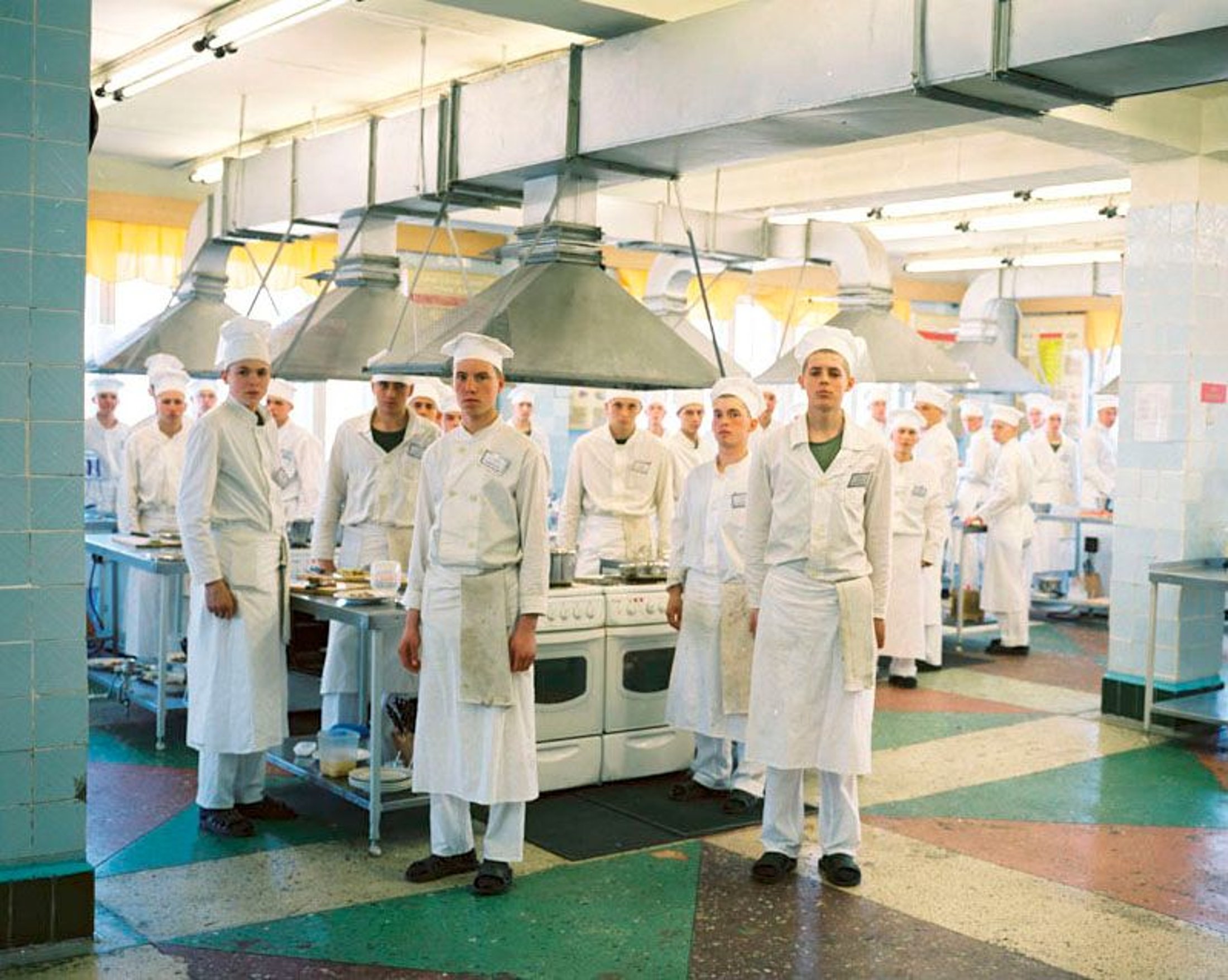They are ordinary men in aprons worn over their uniforms, whose task is to feed the army. They take care of the operation of a giant stomach, a big hungry child with its moods – the Army. At first sight their function is not as significant as that of tank brigades, air force units or paratroopers. But it is on their field kitchens (there is a reason why they are nicknamed “goulash-canons“) that the success of “armed stomachs“ – the soldiers – depends on. Without its cooks the army loses its strength and thus, its sense. As long as right filling and emptying of stomachs is secured, so is secured the filling and emptying of military positions.
There are different kinds of cooks. Some cook by recipes and fulfill orders. Others keep experimenting and have their own opinions on both the kitchen and the world. Still others do a lousy job. And these are the ways people approach decisive moments in life.
And so we can say, with some exaggeration, that the theme of army cooks brings together the biggest hobbies of humankind: Leading wars and cooking.
Cooking itself and fighting have a lot in common – strategy planning, determining the volumes of ingredients, seasoning with spices. Preparation of food becomes a metaphor of battle. Preparing a menu follows the exact proceeding of invasion in the territory of the enemy. Who are the primary suppliers and how do they decide on the most necessary ingredients? Meat, beans, green peas, what is the influence directed on?
Cooks – soldiers, colleagues, enemies. How would they behave at a professional get-together? Would they fight against each other or would they trade recipes?
And what about the moral message of the pots? If all the cooks of the world refused to cook, would that be the end of wars?
This is how slowly the tragicomic truth of Grand History comes together. In between the declarations of politicians and generals, there rises the steam and smells to testify on something close and mundane. I would like to pay homage to these men in green aprons in a film that, I believe, can be at least a tasty eintopf.
— Peter Kerekes, filmmaker
This photo project has been evolving alongside a movie I worked on as both a cinematographer and photographer. During the creative process I realized that the visual language I need to use when making this very particular "cook" book which consists of personal portraits, recipes and stories, is very different from the one I applied when making the movie. The pictures themselves are going to be based on portraits of a variety of army cooks and various armies. And together with them we will watch the “Grand History“ from behind the stoves.
— Martin Kollar, photographer

Feature
Army Cooks
Did you ever think about the men who have to feed hungry armies out on battlefields? What do they do when basic food and ingredients are hard to find? How can they inspire their men on to victory? Photographer Martin Kollar delivers an eye-opening photo-essay from Eastern Europe. Text by Peter...
View Images
Feature
Army Cooks
Did you ever think about the men who have to feed hungry armies out on battlefields? What do they do when basic food and ingredients are hard to find? How can they inspire their men on to victory? Photographer Martin Kollar delivers an eye-opening photo-essay from Eastern Europe. Text by Peter...
Army Cooks
Did you ever think about the men who have to feed hungry armies out on battlefields? What do they do when basic food and ingredients are hard to find? How can they inspire their men on to victory? Photographer Martin Kollar delivers an eye-opening photo-essay from Eastern Europe. Text by Peter Kerekes.



